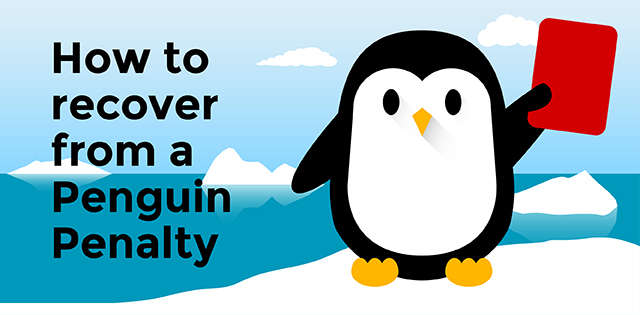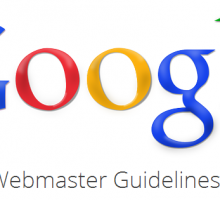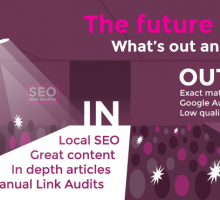Many people contact us when they have experienced a significant drop in website traffic and over the last few years we’ve gained substantial insight into Penguin penalization and the path to Penguin recovery. Often clients come to us after several months of failing to resolve issues in-house and are very disheartened by their lack of progress, and we’re especially pleased we are able to help in these instances. Today, we share the process that will help you p-p-p-ick up after Penguin!
How do I know if I have a Penguin penalty?
There are many reasons why a website can experience a significant drop in traffic. Common issues include manual penalties, technical issues or a Google Algorithm update such as Panda or Penguin. When businesses contact us to say they’re having problems they often assume the root cause is Google Penguin, but they aren’t certain how to fix things. This self-diagnosis usually results from the awareness that they’ve paid people to build cheap links to their site in the past and many rightly assume that this practice has now caught up with them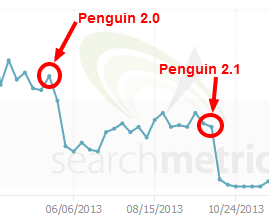
We’re regularly contacted by website owners how have been hit badly by what they believe to be a Penguin update and have never been able to put themselves on the path to recovery. This can be particularly frustrating for companies who didn’t know the SEO agencies or individuals they’d paid to manage their SEO were employing tactics that went against Google Webmaster Guidelines.
What can stop a site from recovering from Penguin?
These are the most common issues that prevent a site from picking up after Penguin:
You haven’t removed all the bad links
If the Google algorithm determines that you have a high number of unnatural/manipulative links, your entire domain can struggle.
If you have a manual penalty I recommend reading our guide to removing a Google penaltyas this is very different to an algorithmic issue caused by Penguin.
Conducting a thorough link audit is time consuming and labour intensive. We offer a specialist Link Audit Service where we will analyse each individual link and produce a disavow file. We prefer to manually audit the links rather than using software because the only sites that I’ve seen recover from Penguin are ones that removed all the potentially bad links. In our experience, software can miss harmful links and wrongly remove some links that have positive benefit for your site.
Improper use of the disavow tool
The disavow tool is a great device when used properly; however, Google doesn’t look too kindly on inappropriate use of the tool.
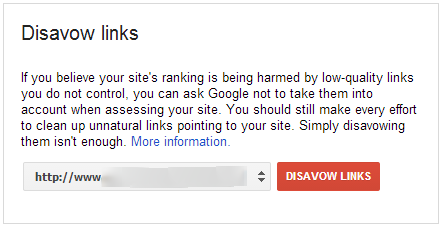
Before using the disavow tool you need to:
- Download all the links pointing to your site
- Audit and analyse the data
- Create a disavow file
If you have a manual penalty you will need to try and get as many of the links removed before uploading a disavow file. However, if you don’t have a manual penalty you can skip straight to disavow. Google’s John Mueller stated here that “using the disavow is enough”.
The most common mistake I see with disavow files is when clients attempt to upload each individual link, for example:
http://example.com/spam
http://example.com/spam/page-2
http://example.com/blog/spam
While this is technically not wrong, I would recommend disavowing at the domain level in the vast majority of cases just in case you miss any links. In addition, I think working at this level sends a strong message to Google that you no longer want any association with this domain whatsoever.
You don’t have any good links
Relevant, high authority links still play a vital role in Google’s ranking algorithm. Google attributes trust and authority from links pointing to your domain, which, combined with other factors, determines your organic rankings in Google. The Penguin update increased Google’s understanding of what was a natural link is and what is unnatural. These unnatural links no longer pass any value and once you have removed/disavowed all the unnatural links pointing to your site, there may simply be little to nothing supporting your site. When developing a Penguin recovery plan we suggest a number of ways you can build ethical links and gain trust in the eyes of Google.
You need to wait for a Penguin refresh
You won’t see benefits of all this hard work until a Penguin refresh happens! A recent Google + Hangout with John Mueller sadly emphasised the work that it would take to implement a refresh of this algorithm.
A Penguin update requires a “complete data refresh” and that “it would essentially need to have everything re-run”.
The last Penguin update was on October 4, 2013 and unfortunately it doesn’t appear as though an update will be coming soon.
You have other problems
- Thin content/Competitors have better content
Thin content is essentially content that is of low value to the user. Creating thin content with little or no added value can impede users and reduce your crawl budget.
When writing content for your website it must have a purpose. Are you trying to inform your readers or perhaps persuade them to purchase your newest product? Writing content simply to rank for a specific keyword is an out-dated practice and will likely hinder your search performance and damage your customer experience. We can audit your current content and analyse it in comparison to your competitor’s, forming the basis of a content strategy that will help reinforce your brand and improve your organic rankings.
- Social presence is lacking
Whilst Matt Cutts has stated that social signals are not part of the search ranking algorithm, the more people that visit your website, the higher the chance that someone will link back to you.
![]()
Social traction may not directly impact your rankings but it can greatly influence your traffic and awareness of your brand. With this in mind, social media should make up part of your overall marketing strategy. One lesson that should be learnt from Penguin is that having all your eggs in one basket is a risky game.
- Bad user experience
If someone navigates to your site and immediately hits the “back” button, it indicates that they were not satisfied with the content. If your site has thin content or a bad user experience your bounce rate is going to be high and this gives Google the impression that the quality of your site is low. In addition no one is going to link to your site if it’s awful and difficult to use. Think first and foremost about the user!
- Slow site
In April 2010 Google confirmed it is using site speed as part of the search ranking algorithm because faster sites improve user experience. There are a number of tools that measure site speed, however, Google’s PageSpeed Tool also gives great insight into how to improve the speed, as well as how to improve user experience on a mobile device.
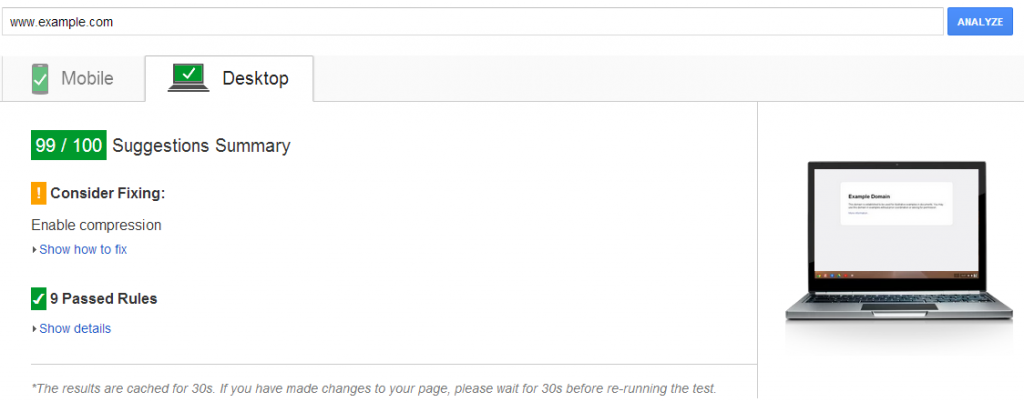
- Internal anchor rick links
Building strength internally with targeted internal linking is a great tactic. It helps distribute link juice and highlight which pages of content are the highest priority. The majority of sites that I encounter however are using rich anchor text to link internally, which is not a good thing. It’s usually better to use long tail SEO terms like “reading our guide to removing a Google penalty”, which I used earlier in this article, rather than “Google Penalty”. This tactic can be extremely effective, though you shouldn’t expect immediate results after implementation. It normally takes three or more months for impact of internal links to start kicking in.
How can I kick start Penguin recovery?
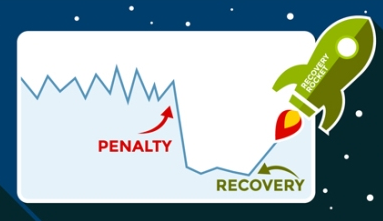 It has been over ten months since the last Penguin update, rather than letting your business stagnate, you could start afresh on a new domain. If you do choose this option, I would recommend permanently redirecting your old site to your new domain. However, you will still need to audit the links pointing to your old domain as a new Penguin update may mean your site is once again hit for the same reasons.
It has been over ten months since the last Penguin update, rather than letting your business stagnate, you could start afresh on a new domain. If you do choose this option, I would recommend permanently redirecting your old site to your new domain. However, you will still need to audit the links pointing to your old domain as a new Penguin update may mean your site is once again hit for the same reasons.
If there isn’t a suitable domain available and you have too much invested in this site then you will to look at other marketing channels to drive traffic. Content marketing, Social Media and PPC are great ways to give your site a boost in traffic, though there will hopefully be a Penguin at some point that will see the hard work to remove bad links rewarded.
Want to know how High Impact can help your site with Penguin recovery? Get in touch today and we’ll be happy to talk you through your options.
Author: Anthony Biggs is the Digital Marketing Manager for High Impact.
You can find him on Google + here.

